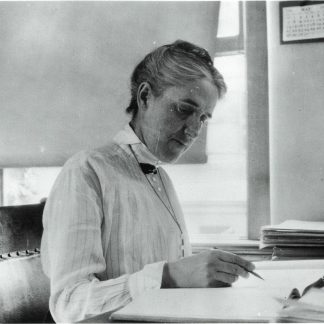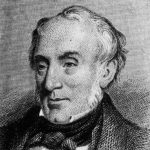Henrietta Swan Leavitt Quotes – Henrietta Swan Leavitt was an astronomer of America. She completed her graduation from Radcliffe College. After completing her graduation Henriette Swan Leavitt started working at the Harvard College Observatory.
There she works as a computer and a task was given to her. The task is to examine the photographic plates. She has to examine these plates for measuring and cataloging the brightness of stars.
This work of Henrietta Swan Leavitt gives her a huge success. By this, she finds the relationship between the period of Cepheid variables and the luminosity.
All these works lead her to a discovery. She provides the astronomers with the standard candle that no one introduced. This standard candle helps to measure the distance in faraway galaxies.
She inspires others with her work a lot. Henriette Swan Leavitt does a lot of hard work in life. For inspiring you we are compiling some famous Henrietta Swan Leavitt Quotes.
Most Famous Henrietta Swan Leavitt Quotes
1.
2.”It is worthy of notice that in Table VI the brighter variables have the longer periods.”-Henrietta Swan Leavitt
3.” It is also noticeable that those having the longest periods appear to be as regular in their variations as those which pass through their changes in a day or two.”-Henrietta Swan Leavitt
4.”The discovery of variable stars, at this Observatory and elsewhere, has progressed so rapidly during the last five years, that the difficulty of keeping pace in observing and discussing them has become very great.” -Henrietta Swan Leavitt
5.”In the study of distribution now in progress here, the actual time devoted to the search for new variables is small, but thorough observation requires much time, while the discussion of results may be prolonged almost indefinitely.”-Henrietta Swan Leavitt
6.” When new lists of variables are published, therefore, it should be remembered that their discovery does not interfere materially with the study of individual objects.”-Henrietta Swan Leavitt
7.” The number of these is so large that the publication of full results for all must be greatly delayed.”-Henrietta Swan Leavitt
8.”Apparently no sharp dividing line can be drawn between true Algol stars and those whose variations are continuous.”-Henrietta Swan Leavitt
9.” Periods of nine variables in this region, which are of the Algol type or closely resemble it, have been determined and are here discussed.”-Henrietta Swan Leavitt
10.”The range of H 1255 is only four tenths of a magnitude, and on account of its brightness it is difficult to observe on all plates except those taken with the 1-inch Cooke lens.”-Henrietta Swan Leavitt
11.” It seemed necessary, therefore, to take unusual precautions in order to secure accurate observations, and to give each one its full weight.” -Henrietta Swan Leavitt
12.”Accordingly, one hundred and thirty six photographs were selected, including nearly all of those taken with the Cooke lens, and also those taken with the 8 inch Bache Telescope on which the variable was certainly faint.”-Henrietta Swan Leavitt
13.”Four independent estimates of brightness were made on each plate, and means were taken, thus reducing the probable error one half. The phase was computed for each observation, thus covering all parts of the light curve. …H 1255 and H 1303 differ from the other variables in a marked degree as in each case the duration of the phase of minimum is very long in proportion to the length of the period. This fact led to considerable difficulty in determining their periods as they were apparently at their minimum brightness for some time before and after the actual minima occurred. In H 1255, the change in brightness is obviously continuous throughout the period, although it is much more rapid near minimum than near maximum.”-Henrietta Swan Leavitt
14.”A remarkable relation between the brightness of these [Cepheid] variables and the length of their periods will be noticed.”-Henrietta Swan Leavitt
15.” The attention was called to the fact that the brighter variables have the longer periods, but at that time it was felt that the number was too small the drawing of general conclusions. The periods of 8 additional variables which have been determined since that time, however, conform to the same law.”-Henrietta Swan Leavitt
16.” The two resulting curves, one for the maxima and one for the minima, are surprisingly smooth, and of remarkable form.”-Henrietta Swan Leavitt
17.” A straight line can readily be drawn among each of the two series of points corresponding to the maxima and minima, thus showing that there is a simple relation between the brightness of the variables and their periods. The logarithm of the period increases by about 0.48 for each increase of one magnitude in brightness.”-Henrietta Swan Leavitt
18.”Since the [Cepheid] variables are probably at nearly the same distance from the Earth, their periods are apparently associated with their actual emission of light, as determined by their mass, density, and surface brightness.”-Henrietta Swan Leavitt
19.”It is to be hoped, also, that the parallaxes of some variables of this type may be measured.”-Henrietta Swan Leavitt
20.
Henrietta Swan Leavitt was the first one who discovered the relationship between period and luminosity. This relationship was carried out for the Cepheid variables. But before that, there were only some techniques that the astronomers used for measuring distance.
These techniques include parallax and triangulation. By these techniques, astronomers measure hundreds of light-years away. But with the work of Swan Leavitt, astronomers can easily measure the distance of about 20 million light-years.
“The discovery of variable stars“-Henrietta Swan Leavitt
Only due to the discovery of Leavitt astronomers know about the diameter of the Milky Way. Henrietta Swan Leavitt had a strong contribution to the field of science. She also inspires others with her wonderful and outstanding discoveries.
By reading the quotes of Henrietta Swan Leavitt you might get the inspiration. The inspiration to do hard work in life and move forward. You might get the motivation to discover new things in life and apply them in life.




















